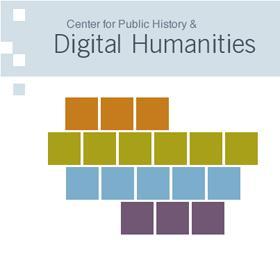Interview with Dr. Souther ([email protected]) on August 8, 2020.
Edited for brevity and clarity.
![]()
Introduction/About the Project
Curatescape is a web and mobile framework that can be used to publish location-based content. The narrative platform allows users to pull together multiple forms of media (e.g. text, audio, media, etc.) to tell the history of a place.
Who is the target audience? Do you see this as only being used by historians or nonprofits?
Curatescape also has a wide range of interdisciplinary uses. For example, an archaeologist could use Curatescape to show where certain artifacts are
found and to provide any other contextual information, or an environmental scientist could use it to tell the story of an ecosystem they are studying. Moreover, Curatescape can be used by individuals for things like class projects or even a digital component of a thesis/dissertation.
It is also being used by a variety of different organizations like museums, municipalities, and higher education institutions. It has allowed these organizations a new way to collaborate as well, in fact, 12 universities are working on a project to highlight stories and history from the Rocky Mountains.
Does it cost money to use the app?
There is a free and paid version of Curatescape. The free service is almost identical to the paid version but lacks mobile apps. The paid version has a $10,000 start-up cost which covers 2 years of service and support, thereafter, it is $1,500 a year. This might seem like a large sum, but is actually only a fraction of what it

would cost to hire an independent developer. Dr. Souther says that because Curatescape is run through Cleveland State University that its objective is cost-recovery rather than profit-oriented.
Are there any local iterations of the app?
The Center for Public History + Digital Humanities at Cleveland State University has used Curatescape to create a local app called Cleveland Historical. Cleveland Historical app can be downloaded onto any smartphone or used on a web-browser, and it contains detailed map-based, multimedia presentations regarding things that happened around the city.
How “Tech-Savvy” do you have to be to use Curatescape?
Users with background knowledge in coding also have the opportunity to put their own “spin on things.” Coders can take parts of the code that are designated as open source to create their own standalone web-only projects.
Are there future plans to further develop the current functionality of Curatescape?
In the future, Curatescape developers want to expand offline capabilities and make the program more tablet friendly so that users with limited access to the internet can still utilize all of the functions.
To read the full catalog project
For more information:
Contact Cait Kennedy at [email protected] for more information.


